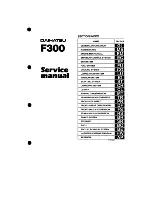
108
ENGINE COMPARTMENT
BRAKE FLUID
WARNING:
Brake fluid is highly toxic
- keep containers sealed and out of
the reach of children. If accidental
consumption of fluid is suspected, seek
medical attention immediately.
WARNING:
If the fluid comes into
contact with the skin or eyes, rinse
immediately with plenty of water.
WARNING:
Brake fluid is highly
flammable. Do not allow brake fluid
to come into contact with open flames or
other sources of ignition (e.g. a hot engine).
WARNING:
Seek qualified assistance
immediately if brake pedal travel is
unusually long or if there is any significant
loss of brake fluid. Driving under such
conditions could result in extended
stopping distances or complete brake
failure.
WARNING:
Do not drive the vehicle
with the fluid level below the MIN
mark.
WARNING:
Brake fluid contains
chemicals known to the State of
California to cause cancer and birth
defects or other reproductive harm. WASH
HANDS AFTER HANDLING.See California
Proposition 65 Warning 0227.
Check the fluid level monthly. The level
should be checked more frequently in high
mileage conditions.
The fluid level may drop slightly during
normal use, as a result of brake pad wear,
but should not be allowed to drop below
the
MIN
mark.
If the quantity of fluid in the
brake reservoir drops below
the recommended level, an
indicator lamp in the DIS will illuminate.
Note:
If the indicator lamp illuminates while
the vehicle is being driven, stop the vehicle
as soon as safety permits by gently
applying the brakes. Check and fill the fluid
reservoir if necessary.
CHECKING THE FLUID LEVEL
Check the fluid level with the vehicle
standing on level ground.
The level of fluid can be seen through the
translucent body of the reservoir. The fluid
level should be between the
MIN
and the
MAX
marks.
FILLING UP THE BRAKE RESERVOIR
CAUTION: Brake fluid will damage
painted surface. Soak up any spillage
with an absorbent cloth immediately and
wash the area with a mixture of car
shampoo and water.
CAUTION: Only use new fluid from an
airtight container. Fluid from open
containers, or fluid previously bled from the
system, will have absorbed moisture, which
will adversely affect performance, and
must not be used.
1.
Clean the filler cap with a clean, dry
cloth before removing, to prevent dirt or
moisture from entering the reservoir.
2.
Remove the filler cap.
3.
Fill the reservoir using an approved
brake fluid until the fluid level is
between the
MIN
and
MAX
marks. See
“Approved Fluids and Capacities” on
4.
Replace the filler cap.
Summary of Contents for REVERO 2017
Page 1: ...K A R M A R E V E R O OW N E R S M A N UA L...
Page 3: ...This Page Intentionally Left Blank...
Page 5: ...This Page Intentionally Left Blank...
Page 12: ...11 OVERVIEW Overview EXTERIOR Exterior Overview 12 INTERIOR Interior Overview 13...
Page 15: ...This Page Intentionally Left Blank...
Page 101: ...This Page Intentionally Left Blank...
Page 149: ...This Page Intentionally Left Blank...
Page 157: ...This Page Intentionally Left Blank...
Page 167: ...This Page Intentionally Left Blank...
















































